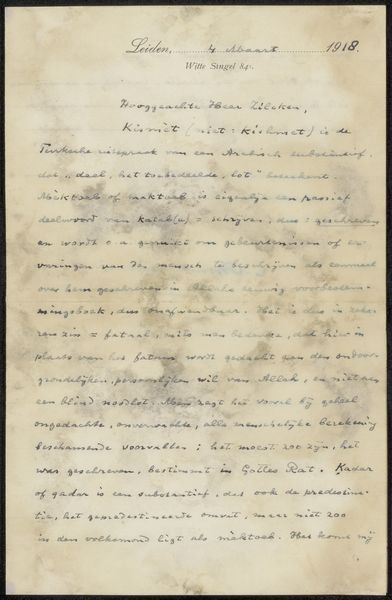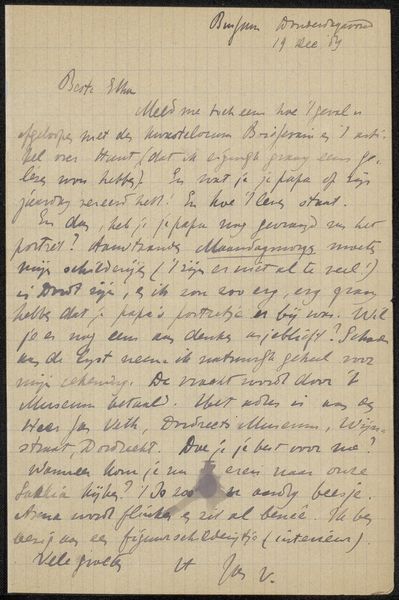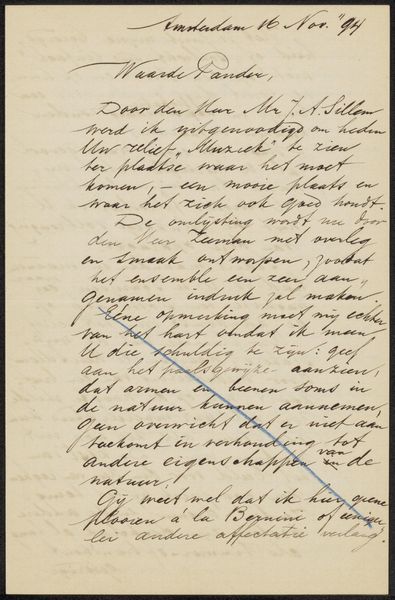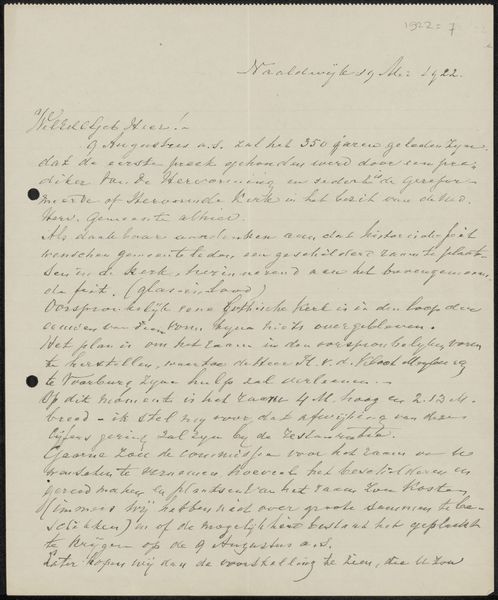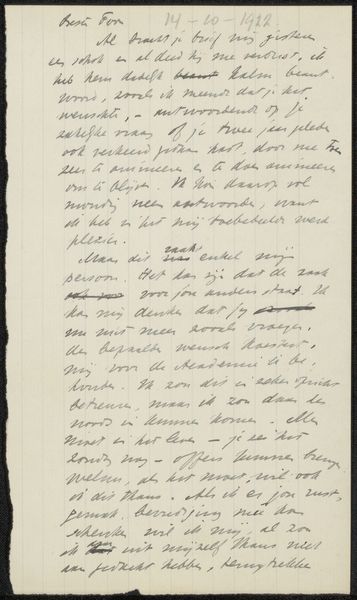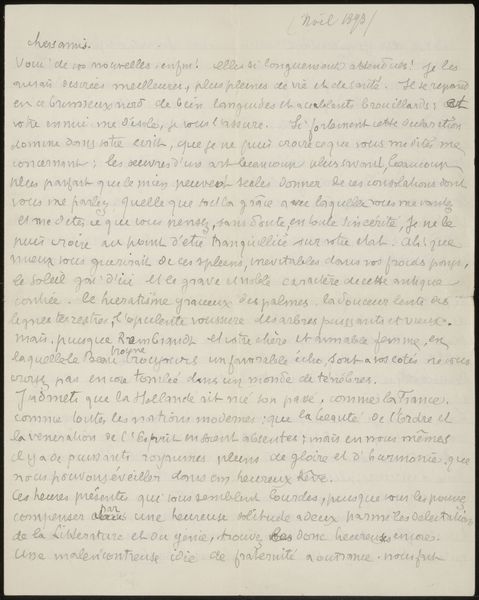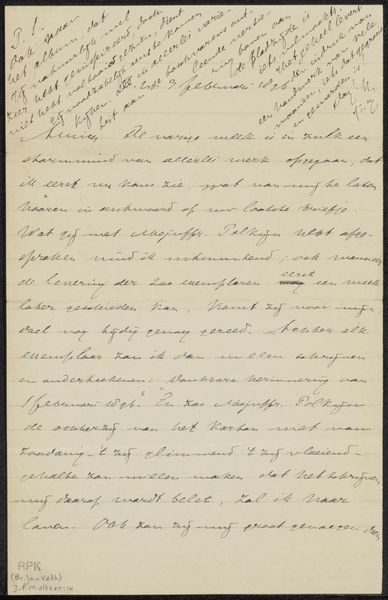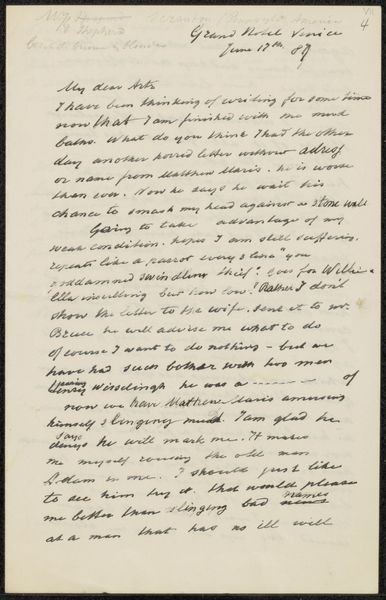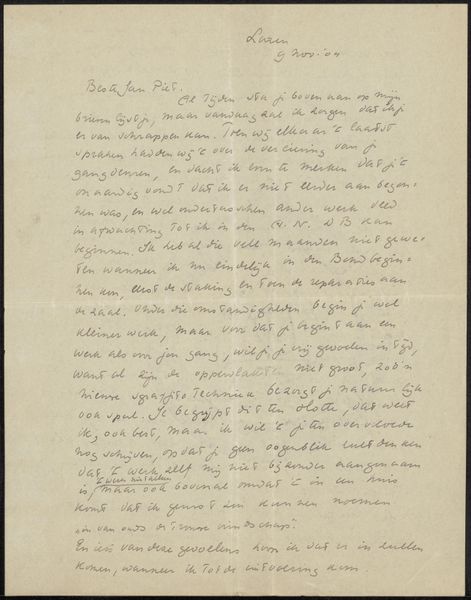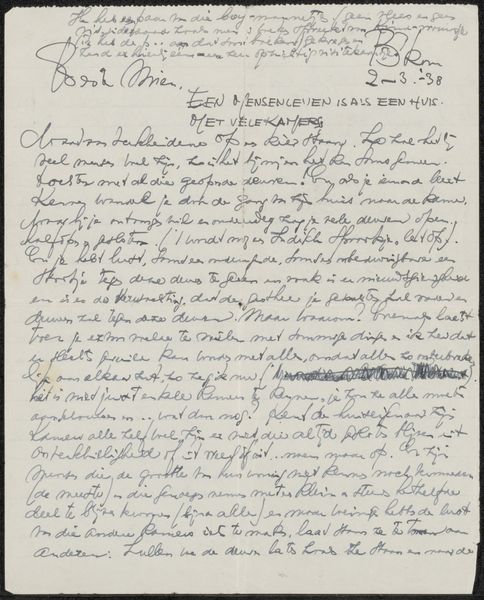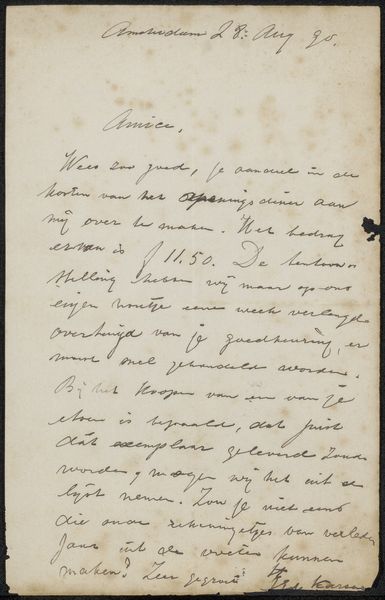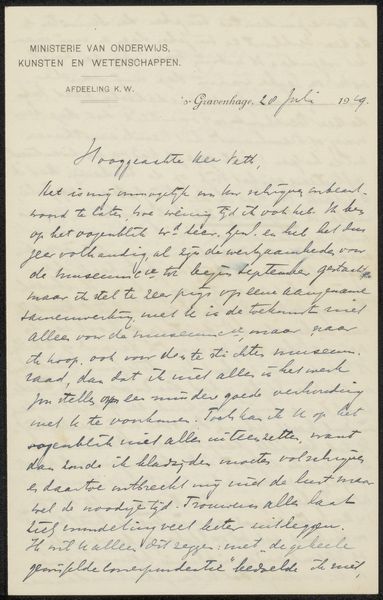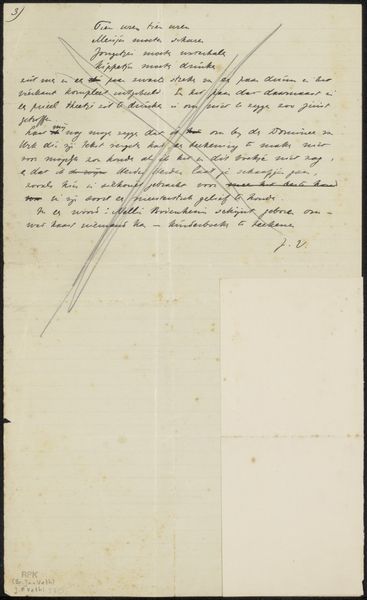
drawing, paper, ink, pen
#
portrait
#
drawing
#
aged paper
#
ink paper printed
#
hand drawn type
#
paper
#
personal sketchbook
#
ink
#
hand-drawn typeface
#
ink colored
#
sketchbook drawing
#
pen
#
watercolour illustration
#
sketchbook art
#
watercolor
Copyright: Rijks Museum: Open Domain
Editor: Here we have "Brief aan Philip Zilcken," a drawing done before 1929 by Elissa Rhaïs using ink on paper. It appears to be a handwritten letter. I'm immediately drawn to the contrast between the delicate script and the aged, almost distressed texture of the paper. What aspects of this work stand out to you? Curator: The formal qualities of this piece present a fascinating study in contrasts, as you pointed out. Observe the carefully controlled lines of the script juxtaposed with the haphazard patterns of decay and staining on the paper. The artist is working with, or against, an established visual rhetoric of a letter. Note how the formal relationship between the hand-drawn elements and paper constructs the drawing's meaning. The tears and marks interrupt any traditional idea of a flat "ground", forcing a dialogue about temporality itself. Does that change how we might look at other textual pieces? Editor: Absolutely. I hadn't considered the "ground" so active in the composition. I guess I assumed that it would act like any other piece of paper, there for writing, but it looks like that changes when the damage on the page seems to talk with the handwriting. Curator: Precisely. Now consider the choice of ink: a dark medium against a lighter ground creates immediate visual hierarchy but also allows for a certain ambiguity. One could argue that those areas not covered by text take a symbolic place, adding another dimension to the written word. Editor: So the interplay between intention – the written text – and accident – the degradation of the paper – becomes the core of the work's visual interest? Curator: Indeed. The artist uses these visual tools, these forms, to provoke meaning beyond the literal words inscribed on the surface. The visual form challenges assumptions of what it means to hold text. Editor: This really pushes me to consider every element within a work, and the intentionality behind their juxtaposition! Curator: Indeed. Considering it helps in deciphering its intricate visual structure and arriving at a more profound understanding of its intended effect.
Comments
No comments
Be the first to comment and join the conversation on the ultimate creative platform.
